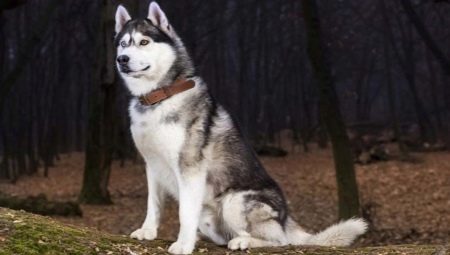The popularity of husky dogs is undeniable - even people far from cynology are ready to have cute puppies with blue eyes. But how to understand how the pet meets the breed standard, what color there are huskies with blue and brown eyes. A variety of options for coloring the outer hair allows you to choose an animal with the desired phenotype for each owner. Black and white and gray, agouti and fawn, wolf and other colors of the dog - how to understand their differences? Will the shade of the coat change with age? Only by studying in detail all the subtleties of this topic can you easily navigate the features of the colors of dogs of the husky breed and understand how the animal will look as it grows and develops.
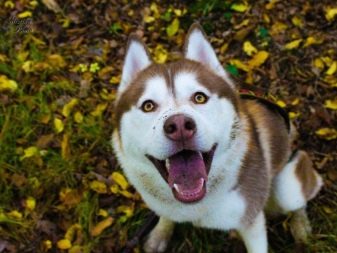
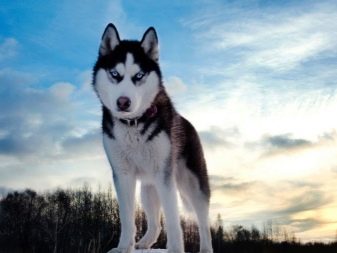
Features of Husky Wool
The dog of the Siberian Husky breed has a magnificent coat, fluffy undercoat and expressive eyes. The genetics of these animals is closely related to the native breeds of the North, which originate from the wolf. Husky inherited from their ancestors good health, high adaptability to different climatic conditions, and the ability to perform hard and hard work.
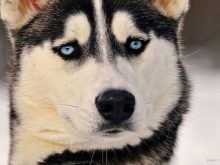

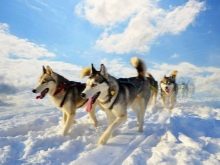
A distinctive feature of the breed is the absolute uniqueness of the wool pattern. Already newborn puppies acquire their own unique ornament of the coat. It is impossible to find two dogs with identical external data. In total, there are more than two dozen color variations, but the official standard includes only the following:
- pure white - usually combined with the brown tone of the iris;
- gray with white;
- white-brown;
- black and white.

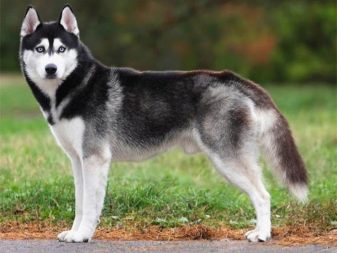
With the blue tone of the iris, you can find puppies and adult dogs of various colors. But in combination with a white shade of wool, it can be seen extremely rarely. Also in animals, heterochromia is a genetic feature in which one eye is colored differently than the other. Husky is characterized by a thick cortical layer that protects the outer part of the outer hair. It visually highlights the pigment of the hair. The rarest color combinations are pure white, marble, black, sable.
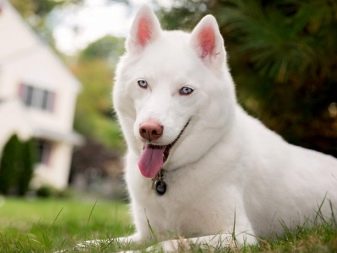

The nature of the husky coat also has its own characteristics. It has an average length, fluffy and dense undercoat, capable of maintaining optimal body temperature even when lowering atmospheric temperatures to -60 degrees Celsius. The presence of a fatty membrane protects the wool from getting wet, helps it dry quickly after getting wet. The color of the coat of dogs of the husky breed is formed by combining two main components - pheomelanin (yellow) and aumelanin (black). Their mixing and dilution gives a variety of colors and shades.
In an adult dog of a colored color, a characteristic mask on the muzzle, which is an important pedigree trait, always remains.
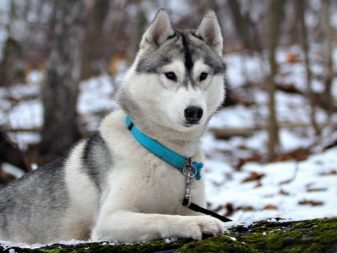
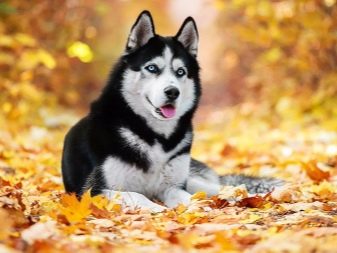
Varieties and description of colors
Each husky color has its own characteristic. There are rare types of shades and names that are well known to every dog handler or amateur dog breeder. Some tones of wool are indicated by several variants of names - light red is often referred to in the pedigree as peach, copper is considered a version of chocolate (rich brown) color.
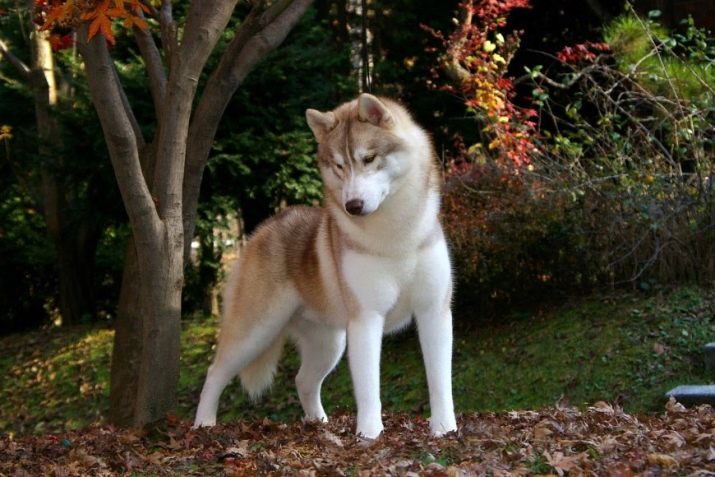
It is worth considering what colors and colors can be found in puppies and adult huskies in fact.
- White. A pure snow-white shade of coat for dogs of the husky breed is considered atypical. It is quite rare. It is characterized by the complete absence of other color inclusions, yellowness. The color is most often found in workers - riding pedigree lines, in Siberia. But at home, breeders do not appreciate him too much - the dog is poorly visible in the snow, which complicates the work with the driver.
Pigmentation of skin that is not covered with wool has contrasting white husky, for example beige, brown, deep black.
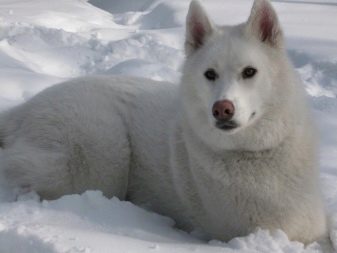

- Gray with white. This color is often confused with silver, but experienced breeders easily explain the difference. The hue of the undercoat in dogs with a gray and white color is brighter. On the back, tail, in the area of the ears, pronounced stripes can be seen. When overlapping spots of a significant part of the back, the color is classified as black.
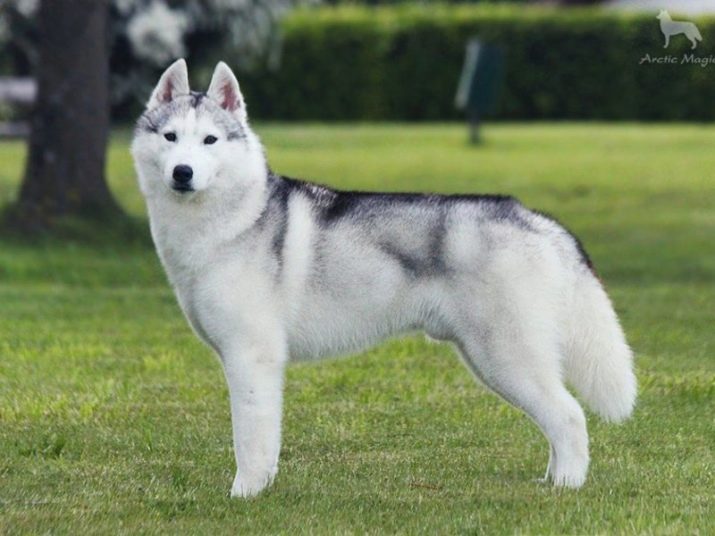
- Silver white. Gray husky with a silver undercoat look especially decorative. In contrast to the snow-white brethren, they already have a pronounced mask on their faces, there is an arrow on the frontal furrow. Representatives of silver-white color are characterized by the presence of a contrasting, dark stroke of the eyes.
In addition, the most common eye shade in this case is blue, incredibly bright and effective, which emphasizes the unusual appearance of the animal.
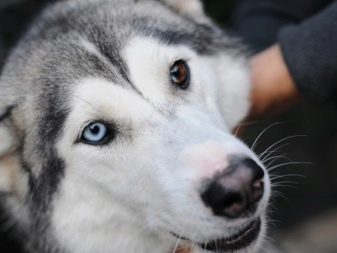
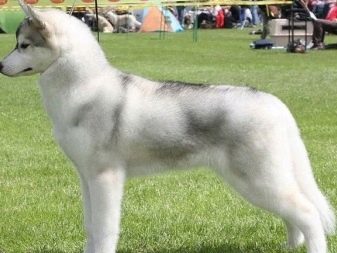
- Black and white. The beautiful black and white shade of the husky coat, which is popular among amateurs, is characterized by a dark basic background and a contrasting light tone of paws, chest, abdomen, and muzzle. The inner part of the ears is also lightened, there is a mask on the face, the pigmentation on the body is black. Undercoat tint is allowed almost any, but the eyes are always blue or brown, there is heterochromia.
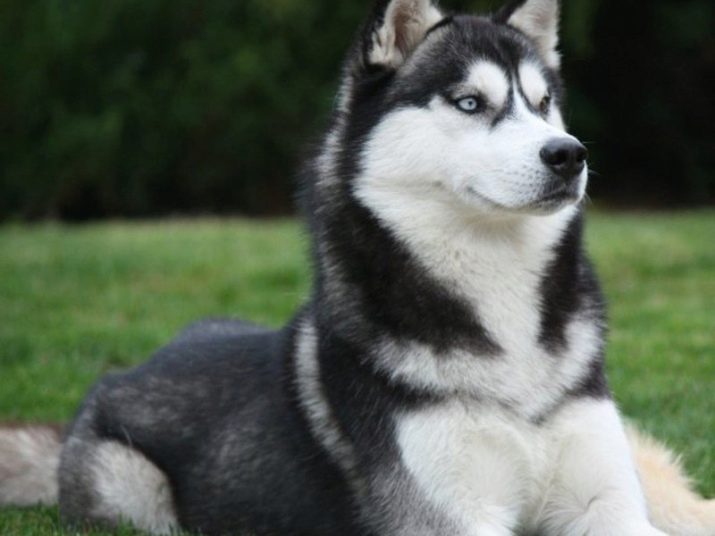
- Agouti. This is a rare color, combined with no less original eye color - olive green. Agouti coloring is characteristic of animals obtained by breeding racing and working lines of the husky breed. The main tone of the wool is created from a mixture of red and dark, in the color of one hair, light, black, red and again black shades replace each other. The mask on the face is well defined, the tail has a darkened end, and pronounced stripes may be present on the body.
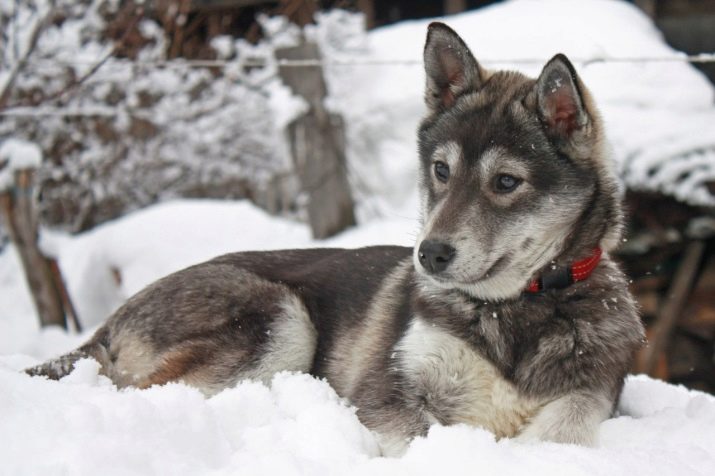
- Wolf gray. This is the closest color scheme to the natural, natural color of the husky ancestors, which suggests a great similarity between the animal and the wild wolf. The base cover is ash. The undercoat can have cream, fawn, silver tones. A reddish tan can be observed on the tail, occipital part of the head, border of ears, back.
The muzzle is painted in a pure white or much lighter tone than the rest of the hair, which distinguishes the dog from the wolf.
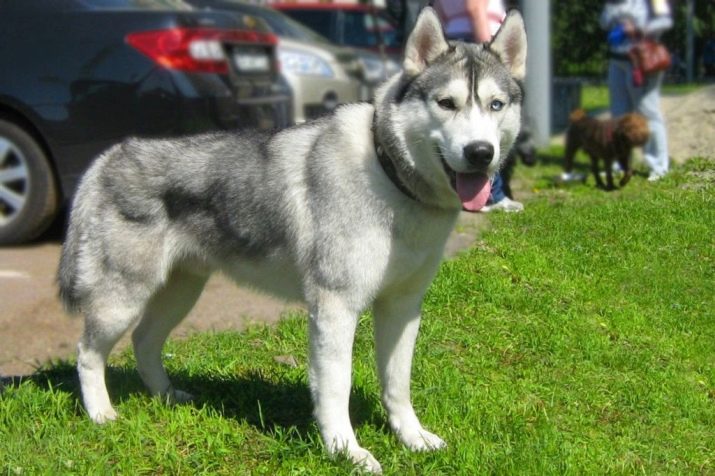
- Isabella. Isabella color husky is characterized by a light main background with areas of the left hair of a fawn or light red shade resembling grapes of the corresponding variety. The appearance of the dog is noble and spectacular. There is a pronounced mask on the muzzle, stripes on the collar and withers, and a colored hole on the forehead.
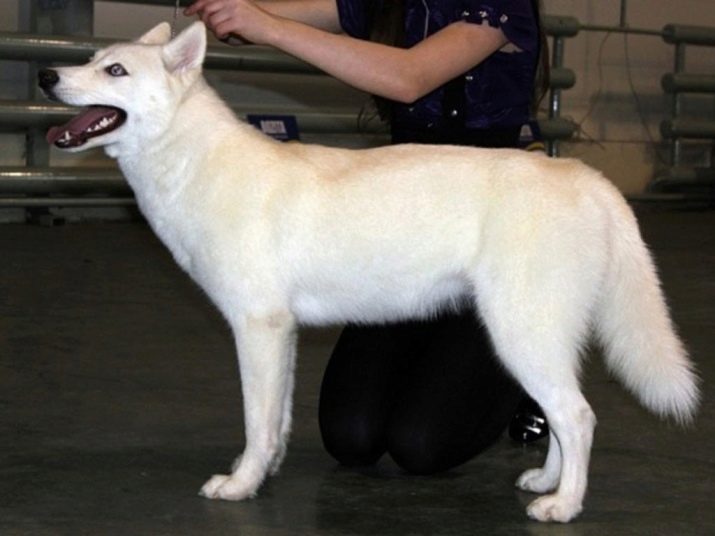
- Piebal (pebold). The unusual and spectacular color of pibold or pinto in a husky is not too common, so it is highly appreciated. On a white basic background, pinto spots of one or several colors are scattered, most often red, chocolate. Bright inclusions have a characteristic rounded shape, are located asymmetrically relative to each other. Pigmentation of open areas of the body - to match the spotting.
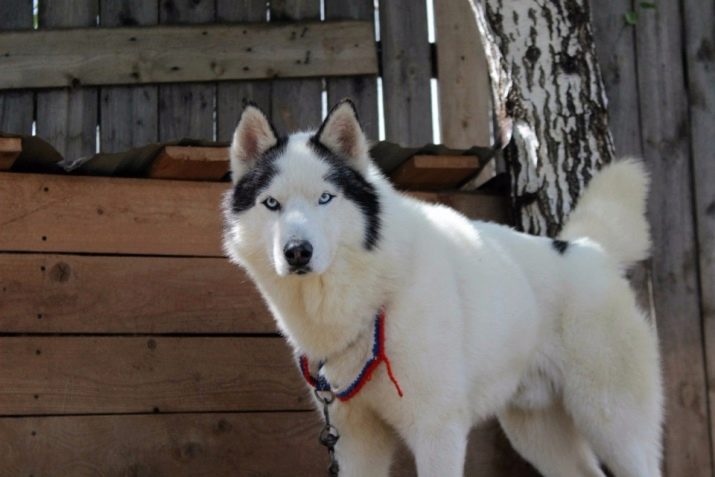
- Sable. The refined sable shade in combination with a thick husky coat looks incredibly impressive, especially in contrast with bright eyes. The main color of the coat can be chocolate, copper, red, honey, with light beige or a shade of coffee with milk undercoat. The hair color is uneven, at the root it is beige, gray towards the end, dark marks on the surface of the muzzle. Nose and pigmentation are brown.
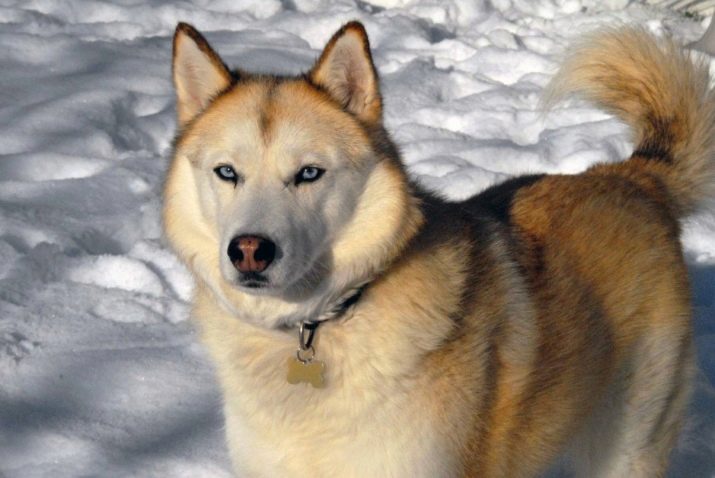
- Black-out. The classic black color of a husky is quite common, especially among representatives of the Siberian branch or racing dogs. Cheprakom is called a dark-colored area of the back, resembling a saddle. The main background of the coat is white.
Not a pure black or gray, but a reddish shade of the outer hair on the back is allowed.
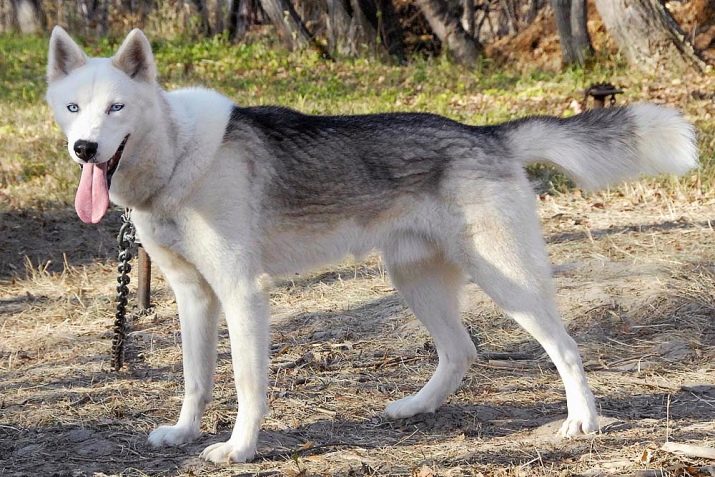
- Chocolate (copper). Dogs with a shade of milk chocolate or Irish coffee are often referred to as copper. Animals have an ostrich hair of deep and bright color, with a nose lobe and other pigmentation in tone or a little lighter color.
Among the husky workers, this color is not very common, but it is highly appreciated among the exhibits.
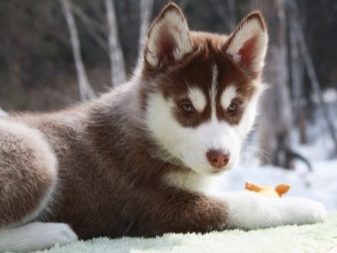
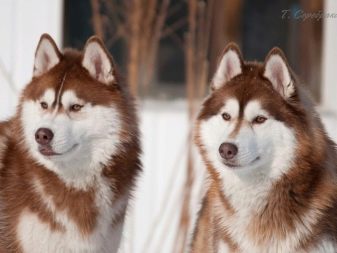
- Red and light red. Bright red and slightly more muted light red - these are the colors that give the dog with amber, brown or blue eyes a special charm. Against the background of snow, the hair glistens and shimmers, it is clearly visible. The pronounced mask is supplemented by a strip on the muzzle, to the nose, the ears are brightly bordered, there is a pronounced white collar around her neck, encircling her.
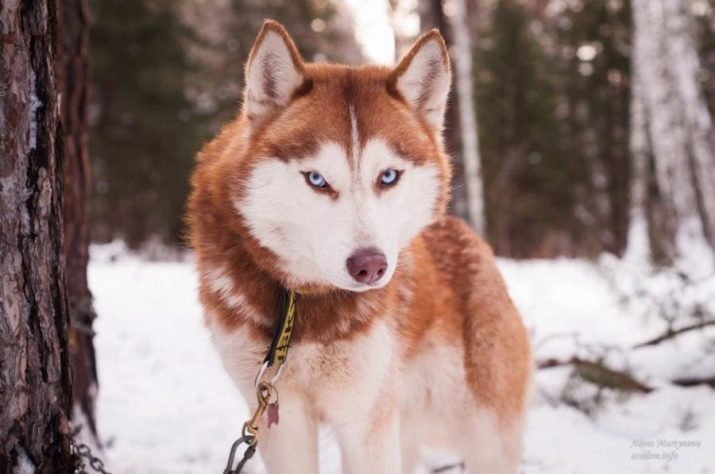
- Pale yellow. This is a rather noble outward appearance. The fawn tone of the coat is lighter than the red, the shade of the undercoat is creamy, rather gentle and light. Compared with red shades, it is lighter, not so striking. Pigmentation is brown or flesh-colored. The mask is weakly expressed, the protrusion in the forehead is white.
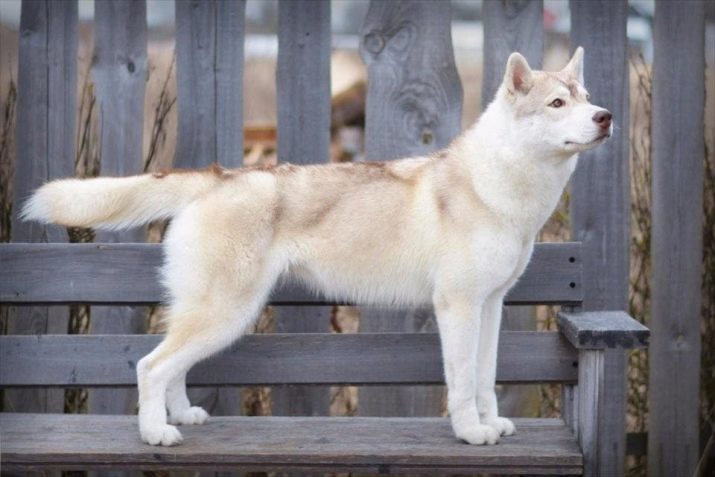
- The black. There is no completely black solid color for a husky. The breed can genetically have no more than 75% of this shade. Dogs are often referred to as Afro-Husky.
It is worth paying attention to the fact that contrasting shades are permissible with the indicated black color only on the muzzle area, the tip of the tail, and the toes of the paws.
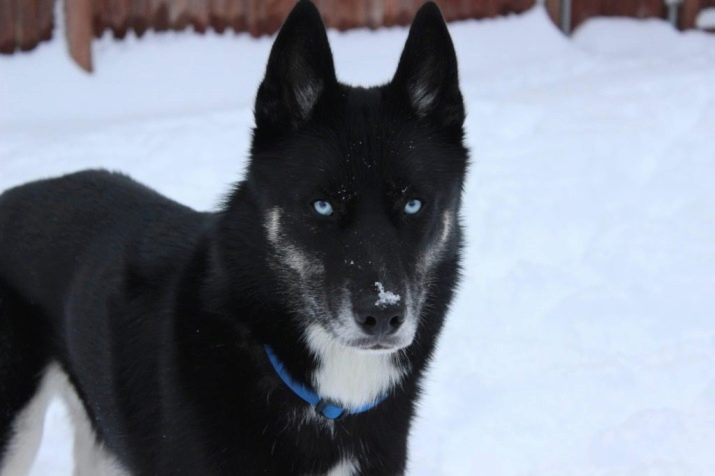
- Splash. Outwardly, huskies of splash color are similar to piebald pibolds, but they have their own bright features. A wide white collar gives the dog a special look. Splash can be with a white background, brown, gray or red blotches. Pigmentation has a contrasting shade, is clearly visible. The eyes in dogs are most often blue.

- Marble. The rare motley or marble color of a husky's coat is usually presented as a basic white background, on the surface of which blotches of black, dark and light gray are scattered.The spots have a regular rounded shape, located on the surface of the thighs, tail, on the back and head.
Outwardly, husky with this type of color are similar to Dalmatians, have dark pigmentation - nose, lips, border around the eyes.
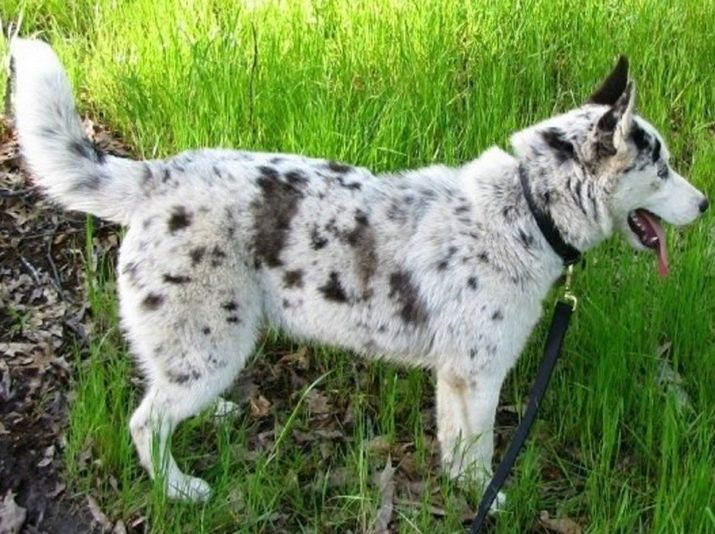
- Tricolor (black and tan). One of the rare husky color options is a tricolor with the main black background, white paws, chest and muzzle. Red marks are located near the eyes, on the limbs and body. The animal has a chocolate-red undercoat that allows you to make the main background more interesting and bright.
Tricolor, despite its rarity, belongs to the category of traditional colors and is found in all genetic lines of the breed.
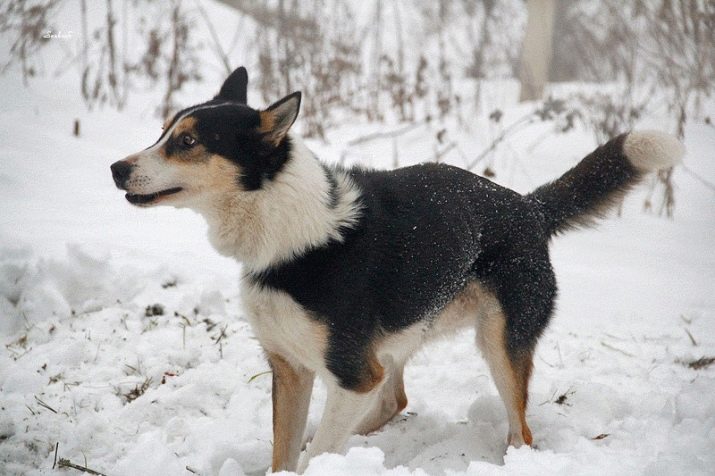
How does color change with age?
All existing husky colors go through a phase of change - recoloring. When a puppy was just born, determining its final color can be quite difficult. There are traits that eventually disappear completely. For example, “glasses” that add charm to the puppies' faces are completely faded by 1–2 years. Does the color inscribed on the puppy card matter in this case, and how to predict the final color of the pet? In fact, it only determines the present and most pronounced shades.
An adult dog will regain its color after flowering. And the first serious change of coat is waiting for the dog at the age of 6-10 months, the second - closer to the year. With age, the color brightens, becomes less bright.

About the husky dog colors, see the next video.
